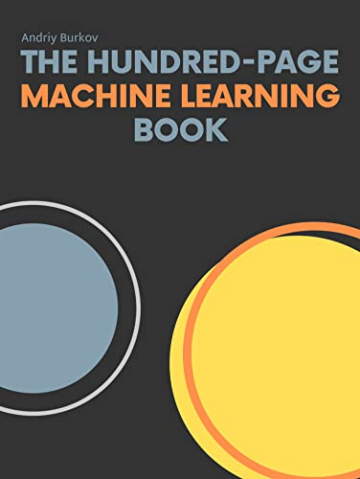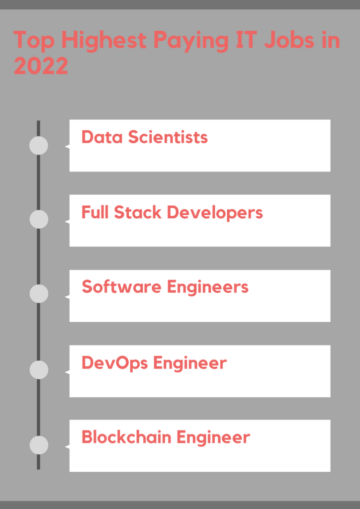Over the years, the importance of design thinking has been continuously evolving in this contemporary world. The customers of this emerging world are able to access global markets quickly. Design Thinking has eliminated the differences between physical and digital experiences.
“Design thinking is a human-centred, modern thinking approach to creative problem-solving, helping in your business’s growth.”
Suppose your company follows the design-driven culture, making your customers the highest priority. It delivers authentic and meaningful results and provides you with a competitive advantage over other businesses. The methodology helps in encouraging all functions, focussing more on the customers. An innovative approach in organising your work leads to astonishing results.
The consulting firm IDEO has made Design Thinking popular in these emerging industries. Its CEO, Tim Brown, has helped design thinking methods gain momentum in this evolving business world.
If you wish to earn a certification in the design thinking course like how it works and use this approach for your business, check out the best Design thinking online course certification from Great Learning. This course is the Stanford design thinking certificate, and the faculty of Stanford University have developed the curriculum covering the entire framework of the design thinking process. In this course, you will learn Design Thinking from scratch to the advanced level. On the course completion, you will be certified with Stanford University.
Before beginning the design thinking stages, let’s get comfortable with a brief introduction to design thinking.
What is Design Thinking?
Tim Brown presented an outstanding definition of Design Thinking:
“Design Thinking is a human-centered approach to innovation that draws from the designer’s toolkit to integrate the needs of people, the possibilities of technology, and the requirements for business success.”
Design Thinking is a strategy for creative problem solving by prioritising the requirements of customers above everything else. It helps a person to engross in several opportunities like experimenting and creating a prototype model, noting down the feedback from customers, and redesigning the product with innovative solutions. You can apply design thinking to numerous fields, like architecture, engineering, business, etc.
Design Thinking is a solution-based approach where you focus on identifying solutions to the problems in contrast to the problem-based approach. The problem-based thinking approach focuses on identifying obstacles and limitations on reasons for a current issue.
Now, let’s discuss the most crucial topic, i.e., the five stages of the design thinking process.
The Five Stages of Design Thinking
The Hasso-Plattner Institute at Stanford proposed the five universal stages of design thinking:
- Empathize: The empathize stage is crucial for analysing the problems where they arose. You must clearly identify users’ issues and empathize with them, which means that you must observe and engage with users by setting assumptions aside and congregating users’ insights. Observing with empathy will help you deduce the issues the customer didn’t even know existed.
- Define: Once you complete the research on gathering the required information in the initial stage, the second step is to define the problem and identify possible solutions. First, note down all the challenges and barriers your customers are facing. Next, identify patterns, their repeated struggles, the cause of their issues, and finally, the biggest problem that your team must solve. This makes it easier to define the issue of your customers.
- Ideate: The third step is to gather ideas for solving the identified solutions in the previous stage. Designers conduct ideation sessions to propose several ideas. The sessions could be a team or a group gathering in a conference hall, inspiring collaboration and creativity to present ideas or a solo member who can brainstorm ideas. The objective is to gather numerous ideas with lateral thinking. In the end, you’ll narrow it to a few ideas to move further ahead.
- Prototype: In this stage, we develop a prototype by implementing the ideas identified in the ‘Ideate’ stage. A prototype is a demonstration version of the final product, which is tested to check how the customers accept it. The objective is to implement every idea to the test and highlight the defects. Throughout this stage, the prototypes are redesigned and improved to solve the proposed problem.
- Test: The final stage of design thinking is testing your prototype. After testing, you submit the prototype to the customer, revert to the customer’s feedback, improvise your prototype, and repeat the process until the customer is satisfied.
Let’s move on to the next topic to discuss various design thinking methodologies.
Design Thinking Methodology
Design thinking follows several kinds of design thinking methodologies or approaches. There are 16 design thinking methodologies that are as follows:
- Double Diamond
Double Diamond is a popular design thinking methodology that illustrates the design thinking process into four steps: Discover, Define, Develop, and Deliver. First, you must discover numerous ideas and share them with the team. Second, you need to define strategies for user requirements. Next, you will develop multiple prototypes for the described problems. Finally, you will deliver the final product to the customer.
- 4D
The 4D methodology is similar to the Double Diamond approach, which illustrates the design thinking process into four steps: Discover, Design, Develop, and Deploy. First, discover the problem. Next, design a solution to the problem and develop some prototypes. In the last step, you will deploy the final product to the production.
- 5D
The 5D design thinking methodology combines 4D and Double Diamond approaches, which illustrates the design thinking process into five steps: Discover, Define, Design, Develop, and Deploy. First, you will discover several ideas and share them with the team. Second, you will define strategies for user requirements. Third, you will design a solution to the defined plans. Next, you will develop multiple prototypes for the described solutions. Lastly, the product is tested, and later, you will deploy the final product to the production.
- DeepDive
DeepDive is more of a tool than a methodology, which is a combination of brainstorming, prototyping, and feedback loops that are merged into an approach, assisting managers and their teams to develop solutions for particular business tasks. DeepDive is divided into five stages: Understand, Observe, Visualize, Evaluate and Refine, and Implement. In the first stage, we understand the requirements, constraints, and problems of the market/clients/technology. Secondly, we must observe real people in real situations. Thirdly, you must visualize new concepts and unique solutions. Next, we must evaluate and refine the prototypes. Lastly, we must test and implement the prototypes for commercialisation.
- Stage-Gate
The objective of this methodology is to improve the growth and profitability of the new product or service. It provides a roadmap with sound stages and decision gates, guiding the teams and management throughout the risky journey from ideation to production. Gates are placed at strategic locations, where a selected management group (the gatekeepers) decide whether a project must continue or terminate.
- Pentathlon
Pentathlon is one of the essential design thinking methodologies that gives special significance to the interaction with the environment and people. It portrays five main elements of innovation management without the involvement of dimensions and degrees of innovation. Several ideas are generated in which a few are selected and developed into numerous concepts. The best of these concepts are chosen for execution and application.
- Simon Herbert
Simon Herbert methodology divides the design thinking process into seven definite stages: Define, Research, Ideate, Prototype, Choose/Objectives, Implement, and Learn. Although the methodology is a non-iterative process, its stages can occur repeatedly and simultaneously.
- Bootcamp Bootleg (Stanford)
Bootcamp Bootleg methodology is one of the most well-defined and complete design thinking methodologies with its own tools. Stanford researchers developed it and divided the design thinking process into five stages: Empathize, Define, Ideate, Prototype, and Test. As discussed in the previous section, these are the five universal stages that follow a non-linear approach to design thinking processes.
- Donut
As the name suggests, Donut is a circular and iterative design thinking methodology. The methodology begins with the design brief and circulates until the problem is solved. It categorizes the design thinking process into four stages: problem finding (observing and research), problem selecting (reframing and contextualising), solution finding (converging and establishing core user needs) and solution selecting (experimenting and prototyping). The first stage includes research methods like event mapping, literature reviews, or personal observations. The second stage comprises problem-solving approaches by cautiously analyzing the information collected and patterns identified. The third stage includes the identification and prioritization of the customer’s requirements. The last step is to build and test the tools and products to check whether they meet the customer’s needs and determine the tools’ performance to the identified problems.
- Stuart Pugh
Stuart Pugh methodology is a combination of the circular and linear design process, which is best suited for engineering problems. The methodology is a core-based model that involves three steps: Iteration, Testing, and Evaluation. Furthermore, around the core-based model, there are plenty of other impacting business and design activities present.
- Circular Chaos
As the name implies, Circular Chaos is another circular and iterative design thinking methodology that includes the company interaction inside, people and the environment outside of the company. Circular Chaos enables a company to create new and innovative products and services that the customers would purchase and utilise.
- Spiral
Spiral is similar to Donut and Circular Chaos design thinking methodologies, which circulates until a solution is identified. The spiral model is a software development methodology that merges elements of both design and prototyping-in-stages to combine advantages of top-down and bottom-up concepts. The spiral model combines the idea of iterative development (prototyping) with the waterfall model’s systematic, controlled aspects. It allows for incremental releases of the product or gradual refinement through each time around the spiral until it reaches prototyping and final product initiation.
- Designing for Growth
Designing for Growth is another complete design thinking methodology with its own tools at every stage of the design process. It also displays how the design thinking process works and how it narrows down as it progresses. Four questions identify a design thinking process: What is?; What if?; What Wows?; and What Works?
These questions help generate new possibilities and decrease the risk as you manage the inevitable growth and innovation uncertainty.
- NPD
NPD methodology is classified into three different versions: Booz et al., Ulrich and Eppinger, and Andreasen and Hein. Booz et al. NPD methodology is a widely recognized model that integrates all the fundamental stages of different models found in design literature. It is based on extensive research and surveys, in-depth interviews, and case studies. Ulrich and Eppinger NPD methodology focuses on cost estimations during product development and its detailed design. Andreasen and Hein NPD methodology divides the design process into three distinct aspects: market, product and production. This model’s phases are Recognition of the Need, Investigation of the Need, Product Principle, Product Design, Product Preparation, and Execution Phase.
- V
The V-model is used to link every stage of the product through verification and validation. The V-Model is designed as a methodology of systems development, which makes the developing systems understandable. In systems engineering, it is used to define a uniform procedure for developing a product or project. Rather than moving down linearly (like the waterfall model), the process moves upwards after the coding phase to form a typical V shape.
- Waterfall
The Waterfall model is the most straightforward design thinking methodology in which the outputs of each phase are the inputs to the following stage. It is best suited for small, simple, and well-defined problems.
These methodologies are designed with various circumstances to cooperate with several businesses in the innovation process. A correct design thinking approach would be to identify which methodology suits the best for current requirements and problems to discover solutions wholly and iteratively.
With this, we reached an end with the article. We have covered all the essential concepts of design thinking stages and methodologies. I hope I cleared all your queries involving various methodologies of the design thinking process. If you have any questions, feel free to ask them in the comments section.
0 Source: https://www.mygreatlearning.com/blog/top-stages-in-the-design-thinking-process-and-its-methodology/
- access
- activities
- ADvantage
- Application
- architecture
- around
- article
- Authentic
- barriers
- BEST
- Biggest
- build
- business
- businesses
- Case Studies
- Cause
- ceo
- certificate
- Certification
- Coding
- collaboration
- comments
- company
- Conference
- consulting
- continue
- Creating
- Creative
- creativity
- Culture
- Current
- Customers
- Design
- design thinking
- develop
- Development
- digital
- Engineering
- Environment
- etc
- Event
- execution
- Experiences
- facing
- Fields
- Finally
- First
- Focus
- follow
- form
- Framework
- Free
- Gates
- Global
- great
- Group
- Growth
- here
- Highlight
- How
- HTTPS
- idea
- Identification
- identify
- industries
- information
- Innovation
- insights
- interaction
- Interviews
- investigation
- issues
- IT
- LEARN
- learning
- Level
- LINK
- literature
- Making
- management
- Market
- Markets
- model
- Momentum
- move
- moves
- new product
- online
- Other
- People
- performance
- Plenty
- Popular
- present
- problem-solving
- Product
- product design
- product development
- Production
- Products
- profitability
- project
- propose
- prototyping
- purchase
- reasons
- Releases
- Requirements
- research
- Results
- Reviews
- Risk
- selected
- Services
- setting
- Share
- Simple
- small
- Software
- software development
- Solutions
- SOLVE
- Stage
- stanford
- Stanford university
- Strategic
- Strategy
- studies
- success
- Systems
- Technology
- test
- Testing
- Thinking
- time
- top
- Universal
- university
- users
- Verification
- What is
- WHO
- Work
- works
- world
- years













